View in other NatureServe Network Field Guides
NatureServe
Montana
Utah
Wyoming
Idaho
Wisconsin
British Columbia
South Carolina
Yukon
California
New York
Spiny Hopsage - Grayia spinosa
State Rank Reason (see State Rank above)
Grayia spinosa is located in Montana primarily in the Pryor Mountain Desert with a couple additional records from southwest Montana. In the Pryor Mounatin area, it is known from less than a dozen, generally small ocurrences. The total population of the species in the state likely numbers less than 2,000 individuals. As the plant is highly palatable, negative impacts associated with heavy grazing are possible. Cheatgrass invasion may also pose a threat to the species by reducing seedling establishment and increasing fire frequency.
General Description
Spiny Hopsage is a rounded, profusely branched shrub that is up to 15 dm high and has erect or spreading, gray-barked, spine-tipped stems. The fleshy, broadly lance-shaped leaves are 10-25 mm long and have entire margins and a short stalk. Foliage is covered with small, star-shaped hairs that easily rub off. Male flowers are on different plants than females flowers, making the plant dioecious. There are 2-5 small, green, sessile male flowers that are 1-2 mm long with a 4-lobed calyx, 4 stamens, and no petals; they occur in the axils of the smaller upper leaves, or bracts. Female flowers are arranged in small spikes in the upper leaf axils. Each flower has an ovary surrounded by 2 green, nearly circular bracts. When mature, the bracts enlarge to be 8-15 mm wide; they are pale to red with thin margins.
Phenology
Flowering and fruiting in May-June.
Diagnostic Characteristics
Atriplex canescens is similar in appearence, though the combination of fleshy leaves with circular, entire-margined, female fruiting bracts distinguishes Grayia spinosa.
Species Range
Montana Range
Range Descriptions
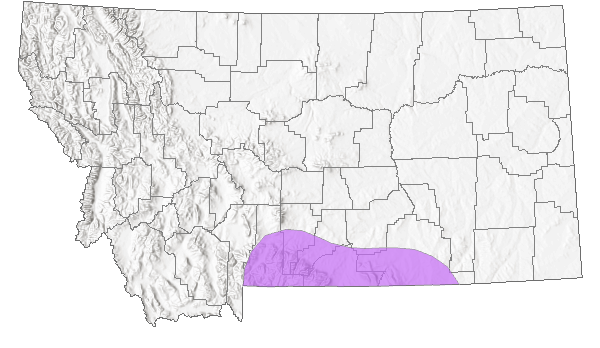
 Native
Native
Range Comments
In MT in Carbon and Park counties; eastern WA southward to CA and AZ; east to MT, WY and CO. Peripheral.
Observations in Montana Natural Heritage Program Database
Number of Observations: 52
(Click on the following maps and charts to see full sized version)
Map Help and Descriptions
Relative Density
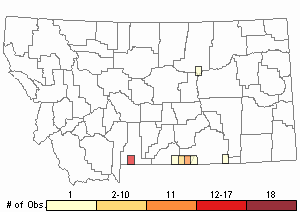
Recency
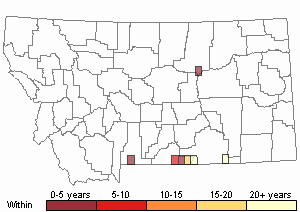
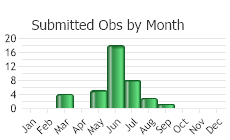
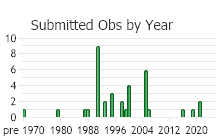
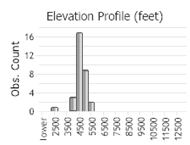 (Observations spanning multiple months or years are excluded from time charts)
(Observations spanning multiple months or years are excluded from time charts)
Habitat
Dry shrublands in the valleys and foothills usually on sandy-textured, alkaline soils at elevations below 5,000 ft (5,600 ft near Gardiner). Typical associated species in Montana include Artemisia tridentata var. wyomingensis, Atriplex confertifolia, Stipa comata, Juniperus spp., Chrysothamnus nauseosus, Chrysothamnus viscidiflorus, Bouteloua gracilis and Sarcobatus vermiculatus.
National Vegetation Classification System Groups Associated with this Species
Shrubland
Arid - Saline Shrubland
Sagebrush Shrubland
Grassland
Lowland - Prairie Grassland
Wetland and Riparian
Alkaline - Saline Wetlands
Ecology
Ecological characteristics specific to Monatana populations of Grayia spinosa are lacking though information for the species across other parts of its range is widely available.
Grayia generally occurs in small patches or as scattered shrubs. Plants initiate growth in early spring and rapidly complete their vegetative and reproductive cycles prior to entering summer dormancy. Though drought tolerant, it may fail to produce flowers during dry years. Germination occurs in the spring with seedling establishment usually occurring beneath the canopies of surrounding shrubs. Seed production is variable and regeneration tends to be episodic. Mature shrubs are most tolerant of wildfires after summer leaf fall and and posses the ability to resprout from surviving root crowns. Fruits are dispersed by wind, gravity, and insects (Daubenmire 1970, Shaw et. al. 1996).
Spiny hopsage is considered one of the most palatable shrubs in salt desert shrub communities in spring and early summer and is used as forage by sheep, goats, dear, pronghorn and rabbits. Its use by wildlife and livestock declines rapidly as plants enter summer dormancy. Although fairly tolerant of grazing, heavy use can have negative impacts on survivorship (Blaisdell and Holmgren 1984).
Growth of cheatgrass (Bromus tectorum) beneath spiny hopsage canopies can interfere with regeneration and promote increased fire frequencies and shrub mortality by increasing fine fuel loads.
Stewardship Responsibility
Threats or Limiting Factors
STATE THREAT SCORE REASON
Reported threats to Montana's populations of Spiny Hopsage (Grayia spinosa) are currently assigned as unknown. Potential threats due to activity related to oil and gas development or competition with Cheatgrass need to be substantiated before a threat rank can be assigned (MTNHP Threat Assessment 2021).
References
- Literature Cited AboveLegend:
 View Online Publication
View Online Publication MTNHP Threat Assessment. 2021. State Threat Score Assignment and Assessment of Reported Threats from 2006 to 2021 for State-listed Vascular Plants. Botany Program, Montana Natural Heritage Program, Helena, Montana.
MTNHP Threat Assessment. 2021. State Threat Score Assignment and Assessment of Reported Threats from 2006 to 2021 for State-listed Vascular Plants. Botany Program, Montana Natural Heritage Program, Helena, Montana.
- Additional ReferencesLegend:
 View Online Publication
View Online Publication
Do you know of a citation we're missing? Lesica, P. and P.L. Achuff. 1992. Distribution of vascular plant species of special concern and limited distribution in the Pryor Mountain desert, Carbon County, Montana. Unpublished report to the Bureau of Land Management. Montana Natural Heritage Program, Helena, MT. 105 pp.
Lesica, P. and P.L. Achuff. 1992. Distribution of vascular plant species of special concern and limited distribution in the Pryor Mountain desert, Carbon County, Montana. Unpublished report to the Bureau of Land Management. Montana Natural Heritage Program, Helena, MT. 105 pp. Lesica, P., M.T. Lavin, and P.F. Stickney. 2012. Manual of Montana Vascular Plants. Fort Worth, TX: BRIT Press. viii + 771 p.
Lesica, P., M.T. Lavin, and P.F. Stickney. 2012. Manual of Montana Vascular Plants. Fort Worth, TX: BRIT Press. viii + 771 p. Lesica, P., M.T. Lavin, and P.F. Stickney. 2022. Manual of Montana Vascular Plants, Second Edition. Fort Worth, TX: BRIT Press. viii + 779 p.
Lesica, P., M.T. Lavin, and P.F. Stickney. 2022. Manual of Montana Vascular Plants, Second Edition. Fort Worth, TX: BRIT Press. viii + 779 p. Quire, R.L. 2013. The sagebrush steppe of Montana and southeastern Idaho shows evidence of high native plant diversity, stability, and resistance to the detrimental effects of nonnative plant species. M.Sc. Thesis. Bozeman, MT: Montana State University. 124 p.
Quire, R.L. 2013. The sagebrush steppe of Montana and southeastern Idaho shows evidence of high native plant diversity, stability, and resistance to the detrimental effects of nonnative plant species. M.Sc. Thesis. Bozeman, MT: Montana State University. 124 p. Taylor, K., T. Brummer, L.J. Rew, B.D. Maxwell. 2014. Bromus tectorum response to fire varies with climate conditions. Ecosystems 17(6): 960-973. http://dx.doi.org/10.1007/s10021-014-9771-7
Taylor, K., T. Brummer, L.J. Rew, B.D. Maxwell. 2014. Bromus tectorum response to fire varies with climate conditions. Ecosystems 17(6): 960-973. http://dx.doi.org/10.1007/s10021-014-9771-7
- Web Search Engines for Articles on "Spiny Hopsage"





